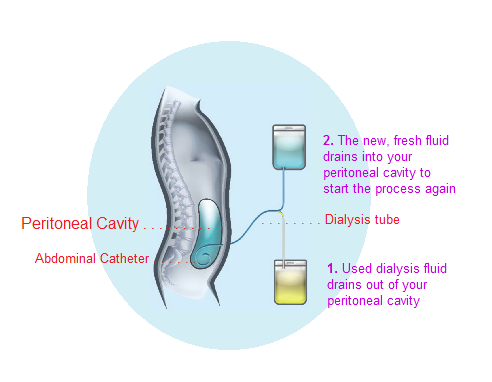Peritoneal Dialysis
What is peritoneal dialysis?
This is a form of dialysis that the hospital will teach you to do yourself at home. The peritoneum is a natural membrane lining your abdomen and surrounding most of your organs. It has a very good blood supply and can be used as a filter.
To have PD, a small, soft, plastic tube (called a catheter) is inserted into your abdomen. This allows dialysis fluid to be drained in and out of the peritoneal cavity. The peritoneum holds the dialysis fluid within your abdomen. This is usually between one and a half and two and a half litres (about two and a half to four and a half pints). The amount depends on your size and how much dialysis you need.
Waste products are passed from your blood, across your peritoneal membrane, and absorbed into the dialysis fluid. When the fluid is drained out again it takes waste and extra fluid out of your body.
Dialysis is happening all the time because there is fluid in your abdomen until the next ‘exchange’. The fluid needs to be changed regularly. This can be done either by hand four times a day (known as CAPD) or by a machine overnight (known as APD).
© courtesy of Guy’s and St Thomas’ NHS Foundation Trust.

